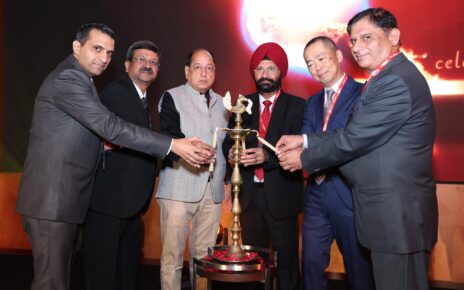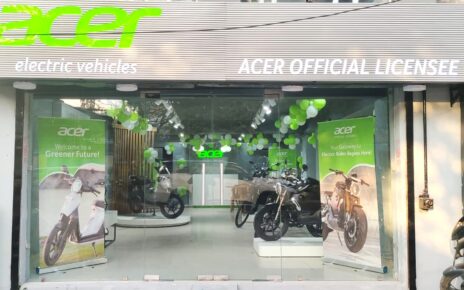
The Federation of Automobile Dealers Associations (FADA), India’s premier organization for automobile retail, has unveiled the results of its comprehensive Dealer Satisfaction Study 2023. Conducted in collaboration with Singapore-based PremonAsia, a leader in consumer insights and advisory services, the study offers an unparalleled look into the auto retail landscape.
Commenting on the release of the study, Manish Raj Singhania, FADA President, said, “The YoY improvements underscore the indispensable value of this annual study in identifying critical issues to fortify the Auto OEM-Dealer partnership. While Auto Dealers are increasingly optimistic, concerns related to dealership viability and policy collaboration with OEMs require immediate attention. Going forward, high-impact areas such as unsold inventory clearance and actions against MBOs (Multi-Brand Outlets) offer ample scope for improvement.”
Amar Jatin Sheth, FADA Treasurer and Director DSS’23, added, “In its third edition, DSS’23 has grown more robust, drawing participation from over 1,800 Dealer Principals and approximately 3,500 outlets, representing a balanced mix from all four geographical zones in India. The study utilizes six evaluative dimensions and 70 attributes to arrive at its findings. While dealer satisfaction is generally improving, aspects like dealer involvement in OEM policy-making remain areas for potential progress.”
PremonAsia Director and COO Rahul Sharma remarked, “The Dealers continue to assign higher importance to After-sales and Business Viability related issues. While there have been improvements made by OEMs in all the areas, the expectations on ensuring Dealer viability, particularly related to OEMs buyback / deadstock inventory and understanding the dealer cost structure are still flagged as concern areas across the industry. Addressing these concerns through involving dealers in the policy making and hearing them will certainly go a long way in managing dealer expectations better.”
Distinctive Achievements in Dealer Satisfaction Across Segments
While the leaders in the Two-Wheeler Mass Market and Commercial Vehicle (CV) segment maintain their positions from the previous year, the Four-Wheeler Mass Market segment has seen intriguing shifts. Hyundai now spearheads the category, followed by notable entrants Maruti-Suzuki and Mahindra & Mahindra in the top three.
Exceptional Performers Deserve Recognition:
- Honda Cars India: Demonstrating the most significant leap in this year’s study, Honda Cars India escalated its ranking by 153 points, settling at the fourth position in the Four-Wheeler Passenger Mass segment.
- Two-Wheeler Mass Market: With an industry-level improvement of 84 points, Royal Enfield distinguished itself by boosting its score by 96 points to secure the runner-up position.
- Commercial Vehicles: While VECV continues to occupy the pole position, Tata Motors and Ashok Leyland have significantly narrowed the gap, improving their scores by 68 and 67 points, respectively. This sets the stage for an intensely competitive landscape in the forthcoming years.
- Brand Dynamics: Hyundai has surpassed Kia in rankings, attaining the leadership position. Honda emerges as a standout performer, notably benefiting from its new product launches and unwavering dealer support, particularly in areas concerning Business and Viability.
- The continuous performance improvement across OEMs and intense competition underscores the evolving nature of the auto retail industry, reflecting its readiness for future challenges.
Industry-wide Insights and Emerging Trends
At the aggregate industry level, the Average Dealer Satisfaction Score has marked an encouraging increase, rising by 48 points YoY to a current score of 767. Notably, ‘Product’ stands out as the highest-scoring factor across all categories. This trend underscores the industry’s commitment to meeting contemporary consumer demands with world-class products.
Despite its notable improvement from the previous year, the ‘Business and Viability’ criterion remains the lowest-scoring factor, signalling a critical area for ongoing attention and development.
Segment-Specific Observations:
- Commercial Vehicle: The study highlights an increased level of satisfaction, particularly in business viability. This is significant, given the industry’s recent transition to BS VI compliant vehicles. However, concerns remain about deadstock management and OEM inventory buyback policies.
- Four-Wheeler Mass Market: While dealers express high satisfaction with product reliability, concerns persist regarding deadstock and inventory buyback policies, as well as the extent of dealer involvement in policy-making decisions with OEMs.
- Two-Wheeler: Similar to their counterparts in other segments, two-wheeler dealers are generally satisfied with product reliability and range. Yet, concerns about OEM buyback and deadstock policies, along with decision-making involvement, remain.
Opportunities for Enhancement:
- Inventory Management: There is a consensus on the need for more supportive measures in inventory and carrying-cost management.
- Dealer Involvement: Initiatives like active Dealer Advisory Councils could play a pivotal role in driving dealer satisfaction, particularly by involving them more closely in decision-making processes.
These findings present valuable insights for OEMs to refine their strategies, focusing on both product excellence and strengthening dealer partnerships, to navigate the industry’s evolving landscape effectively.




